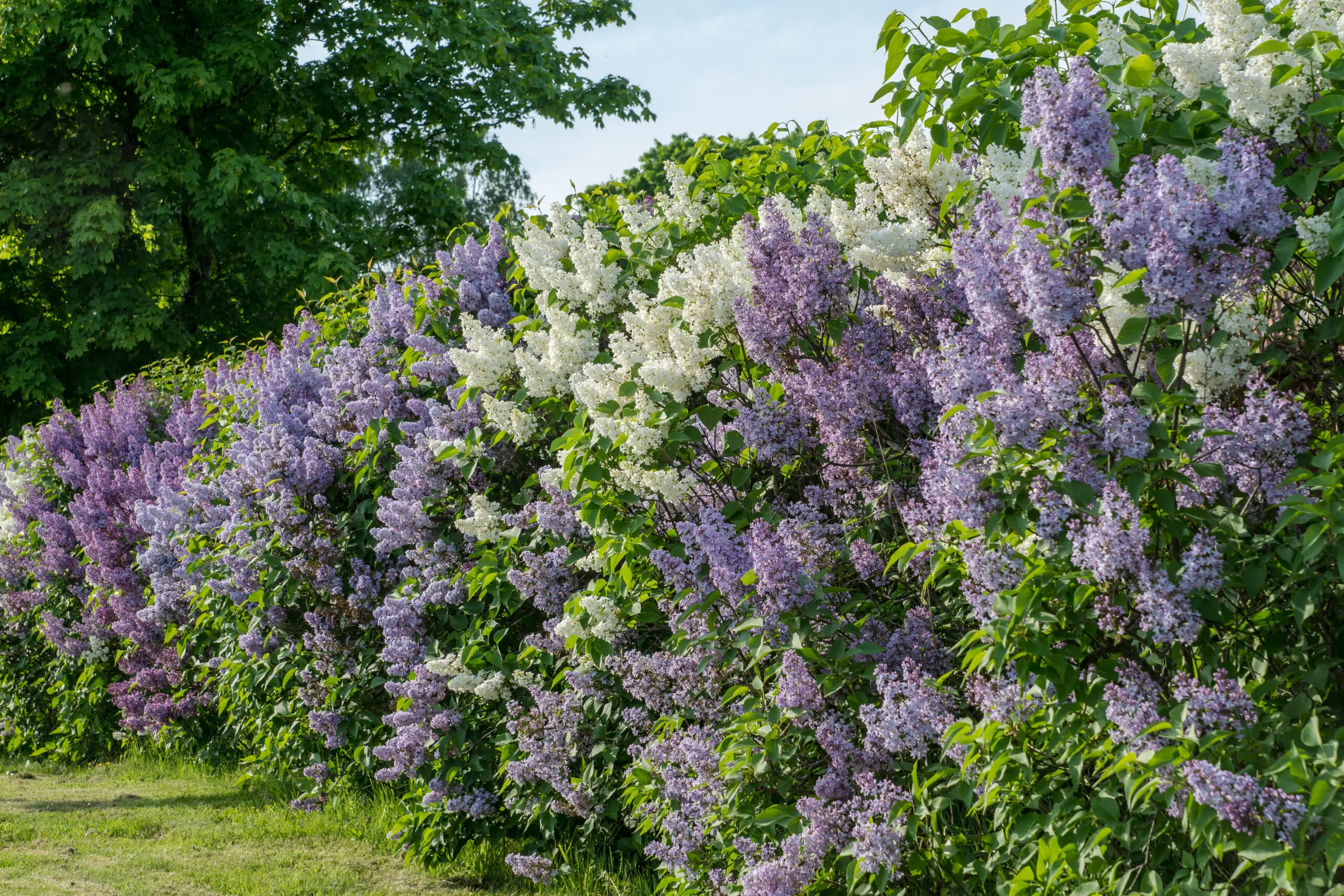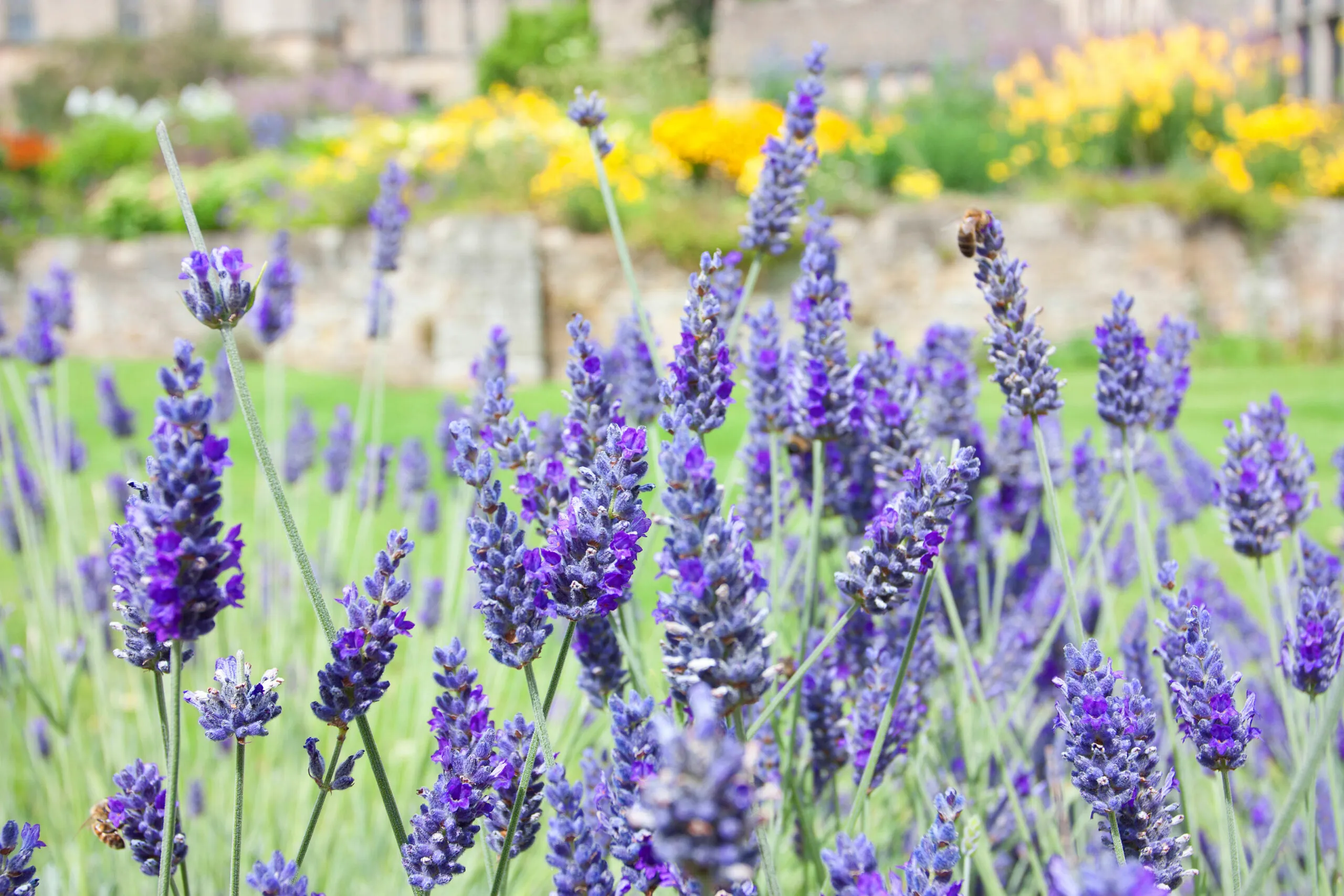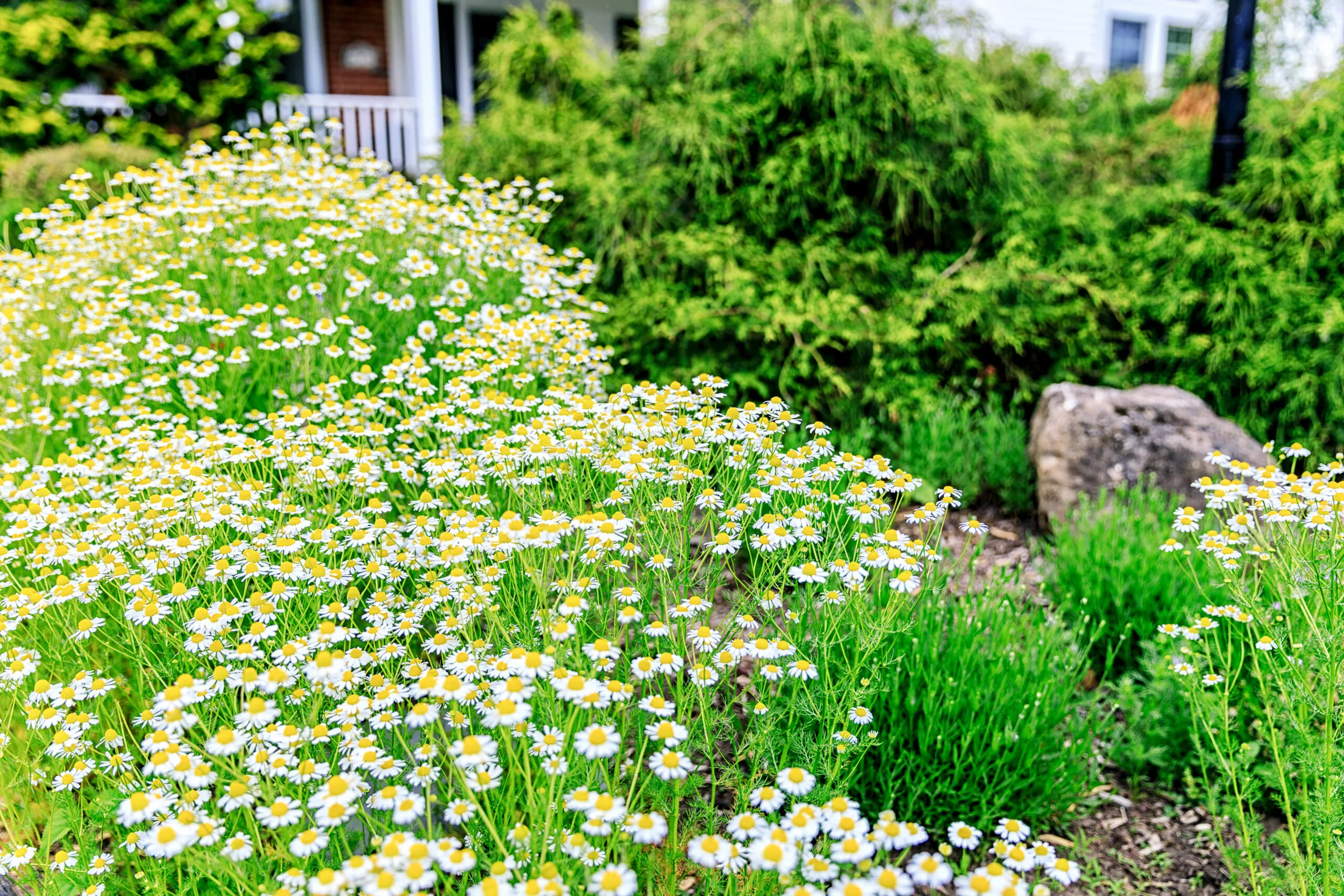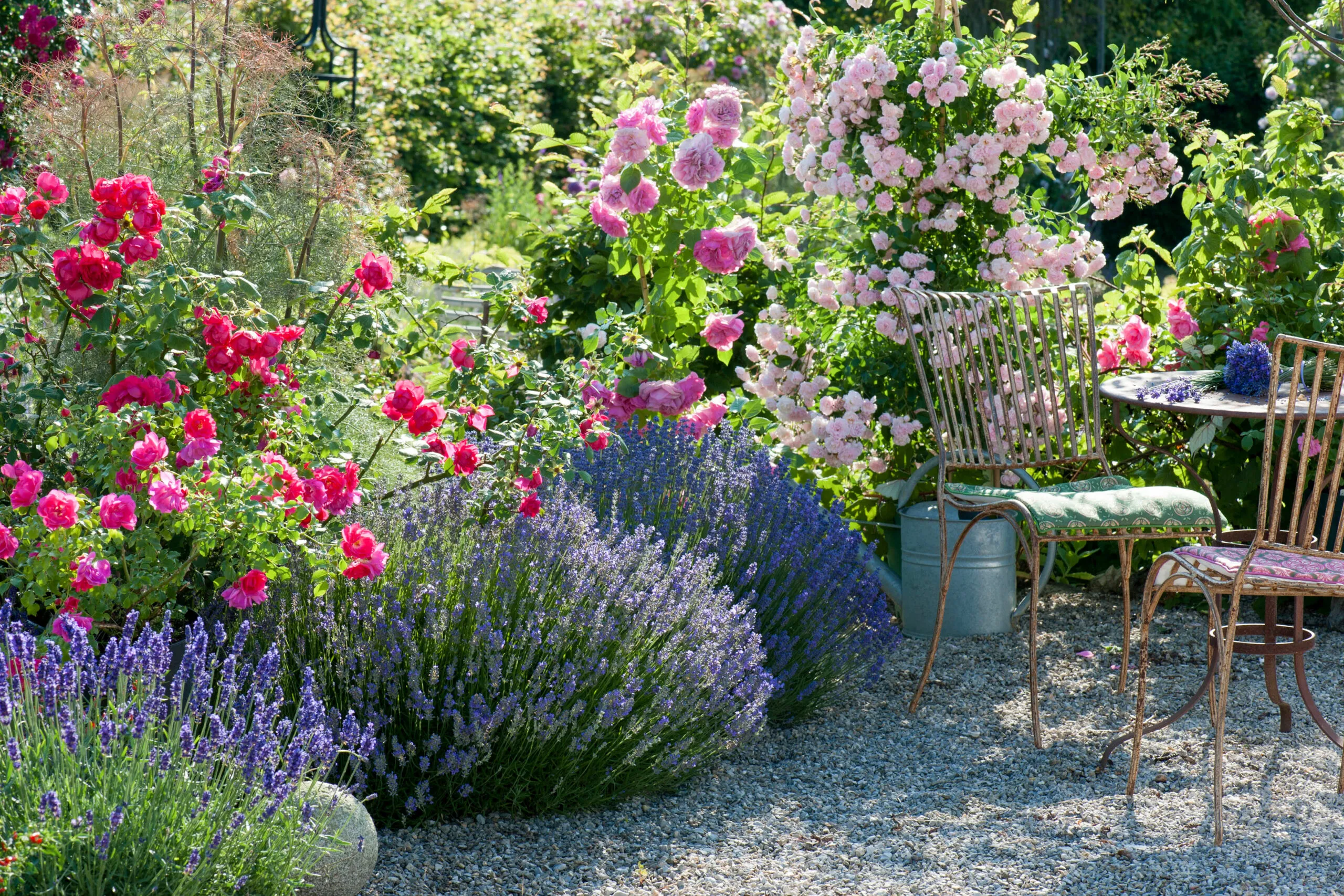A garden’s visual appeal may make the first impression, but its smell often ends up stealing the show. Fragrant plants delight our senses, make outdoor spaces feel more relaxing, and attract important pollinators. In this guide, we’ll share a few of our favorite fragrant plants and teach you how to magnify their sweet, spicy, or even candy-like aromas.
Tips for Purchasing and Planting Fragrant Flowers
Before heading to the nursery, keep the following in mind:
- Don’t assume about scents: Even if a plant is widely known for its scent, not all its varieties will necessarily emit much aroma. Some may be cultivated more for their form than their fragrance. Read the tags in plant containers or online descriptions, and ask your retailer if that information seems vague.
- Group your plants: Drift planting helps strengthen the scent you, your visitors, and pollinators perceive—cluster the plants in groups of three to five.
- Consider toxicity: Some plants have a wonderful fragrance, but can be toxic if a person or animal eats them. We’ve noted below when to keep dogs, cats, and other pets away.
Top 13 Most Fragrant Plants for Your Garden
Here’s our rundown of the best fragrant plants to include in your garden.
1. Lilac

Few fragrances rival the intense sweetness of lilac (Syringa vulgaris) blooms. This deciduous shrub, a member of the olive family, offers a powerful scent that carries widely through a garden. Lilac grows best in USDA Hardiness Zones 3–7, and especially with full sun and loamy, well-draining soil. You can prune the shrubs soon after flowers die to get more blooms next spring.
2. Gardenia
Gardenia (Gardenia augusta and Gardenia jasminoides) is a subtropical evergreen shrub known for its showy white flowers and sweet, heady aroma. It grows best in Zones 6–11 and prefers partial shade to full sun and high humidity. Plant gardenia in moist, well-draining, acidic soil with plenty of organic matter, and keep it away from pets to avoid poisoning.
3. Lavender

English lavender (Lavandula angustifolia) is renowned for its distinct, relaxing, and almost musky scent. It’s also known to repel mosquitoes, making it both a beautiful and practical choice.
Lavender thrives in Zones 5–9, especially in full sun. It’s fairly drought-resistant and adapts well to various soil types. However, it’s also toxic to pets, so keep them away.
4. Jasmine
Jasmine (Jasminum officinale) offers a potent punch of exotic spicy-sweet fragrance. It’s ideal for surrounding trellises and fences with aromatic blooms. The flowers don’t stay open for long, but it’s a repeat-bloomer from late spring to early fall.
Jasmine grows best in Zones 7–10. Use well-draining soil in a sheltered area, with full sun to light shade.
5. Radiant Perfume Rose
No fragrant garden is complete without roses, but the Radiant Perfume rose (Grandiflora rose) stands out with its strong citrusy scent and yellow petals. Bushes can grow up to 6 feet tall, blooming from late spring to early fall. Plus, the flowers are well-suited for making bouquets.
Radiant Perfume roses grow best in Zones 6–9, where there’s full sun and well-draining soil.
6. Hyacinth
Hyacinth (Hyacinthus) is one of the rare spring-blooming bulbs that’s known for its aroma. The colorful spear-shaped bloom clusters look great in mixed borders and containers, and as perennials, they’ll return an intensely sweet smell year after year.
Hyacinth grows best in Zones 3–9. It prefers full sun, but can do well in partial shade so long as the soil is well-drained. It’s toxic to both people and pets, so keep your furry friends away and use caution handling the bulbs.
7. Daphne
You don’t need to wait till spring for a fragrant garden with daphne. Daphne spp., as it’s scientifically known, is a tidy, rounded evergreen shrub that releases a citrusy-honey scent by winter’s end.
If you live in Zones 4–9, you’re in an ideal place to grow daphne. Purchase an established plant and place it where it can get partial sun and slightly acidic, well-draining soil. Bear in mind that it’s toxic to both people and pets.
8. Moonflower
Moonflower (Ipomoea alba) is an aptly named vine that opens its large, luminously white, trumpet-shaped blooms in the evening. If you’re looking to attract pollinators later in the day, it’s a safe bet.
Moonflower is a perennial in Zones 6–9, but you can grow it elsewhere as an annual with full sun and moist, well-draining soil. It’s a toxic plant, so keep it away from where pets could get to it.
9. Carnation
Some people consider carnation (Dianthus caryophyllus) rather pedestrian, but it can impart a unique clove-like scent that adds contrast to sweet-smelling plants. It blooms in the late spring and will continue popping with petals if you remember to deadhead it.
Carnation grows best in Zones 7–10 and prefers full to partial sun. Use alkaline, well-drained soil, and keep it away from pets.
10. Chocolate Flower
Chocolate flower (Berlandiera lyrata) is an herbaceous perennial that boasts bright yellow petals and a distinguished cocoa aroma. It’s a great choice for borders, beds, and rock gardens. Since it loves full sun and tolerates heat and drought conditions well, you might want to consider it if you live in a dry, hot climate like the Southwest.
Chocolate flower grows best in Zones 4–10. Keep in mind that it’s toxic to both humans and pets.
11. Sweet Woodruff
Sweet woodruff (Gallium odoratum) is a ground cover that smells as good as it looks. The lush carpet of small flowers gives off a heady aroma that intensifies once the plants dry.
Sweet woodruff grows best in Zones 4–8. As an easygoing plant, it does well in moist, well-drained soil and shady areas.
12. Chamomile

Sweet scents aren’t for everyone, so folks who prefer a fresher, grassier essence may choose chamomile—Matricaria recutita is an annual, while Chamaemelum nobile is a perennial. Not only is this herb with pretty, daisy-like flowers that emit the same aroma as a cup of chamomile tea, it may also offer similar calming properties, to make sitting in your garden even more relaxing.
Chamomile grows best in USDA Hardiness Zones 2–9 and thrives in both full sun and partial shade. It’s not the least bit fussy, tolerating heat and drought well, and it’s not toxic to humans or pets.
13. Four O’Clock
As the name implies, four o’clock (Mirabilis jalapa) opens its bright colorful blooms in the late afternoon to give off a lemony-sweet aroma that intensifies in the evening. This herbaceous perennial can spread quickly so control as necessary.
This easy-care, pest- and disease-resistant plant flourishes in moist and well-draining soil and, ideally, full sun and within USDA Hardiness Zones 9–11.
Our Conclusion
Memories can begin with smell, so fragrant flowers often remain prominent in our minds. When you plant flowers that smell great in your garden, you’ll enjoy a memorable oasis that both looks and smells wonderful. Use this list of our top 13 fragrant picks to get started.

